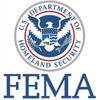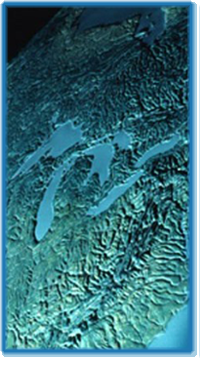Flood Insurance: The Risk of Not Being Insured
- Cost of Flooding Tool has been updated and allows users to now embeddable Cost of Flooding Tool on their own website. Users can visit Agents.FloodSmart.gov and click “embed” in the lower corner of the tool. [https://agents.floodsmart.gov/getting-started/the-risk-of-not-being-insured]
FEMA Preliminary Data
- Learn more about FEMA Preliminary Flood Hazard Data [fema.gov]
- Direct link to FEMA’s Pending and Preliminary Flood Hazard Layer mapping application [fema.maps.arcgis.com]
Project Data Centers
- C-STORM [cstormdb.erdc.dren.mil] – Basin wave and storm surge database platform, for access to wind, waves, pressure, ice, and water level data at near-shore “Save Points”
Note: This site will start with Lake Michigan data, followed by Lake St. Clair and Lake Erie data. - U.S. Army Corps of Engineers Great Lakes Oblique Photo Viewer [https://greatlakes.erdc.dren.mil/]
Note: This site is currently being moved to a new host and is temporarily inaccessible. This note will be removed when it is back up and running again. - LiDAR [csc.noaa.gov] – High-resolution bathymetric and topographic data housed at NOAA’s Coastal Service Center
- Great Lakes Shoreline Geodatabase (.gdb) [2.4 MB .zip]
- CSHORE [sites.google.com] – CSHORE is a one-dimensional time-averaged nearshore profile model for predictions of wave height, water level, wave-induced steady currents, and profile evolution.
Great Lakes Coastal Flood Study, 2012 Federal Inter-Agency Initiative: Guidance Documents and Reports
- Lake St. Clair: Storm Wave and Water Level Modeling [10.6 MB .pdf],
Tyler J. Hesser, Mary A. Cialone, and Mary E. Anderson, U.S. Army Corps of Engineers
(Final Published Report, June 2013) - Statistical Analysis and Storm Sampling for Lakes Michigan and St. Clair [3.68 MB .pdf],
Norberto C. Nadal-Caraballo, Jeffrey A. Melby, and Bruce A. Ebersole, U.S. Army Corps of Engineers
(Final Published Report, September 2012) - Lake Michigan: Prediction of Sand Beach and Dune Erosion for Flood Hazard Assessment [1.0 MB .pdf],
Bradley D. Johnson, U.S. Army Corps of Engineers
(Final Published Report, August 2012) - Cross-Shore Numerical Model CSHORE for Waves, Currents, Sediment Transport
and Beach Profile Evolution [2.17 MB .pdf],
Bradley D. Johnson, Nobuhisa Kobayashi, and Mark B. Gravens, U.S. Army Corps of Engineers
(Final Published Report, September 2012) - Wave Height and Water Level Variability on Lakes Michigan and St Clair [7.74 MB .pdf],
Jeffrey A. Melby, Norberto C. Nadal-Caraballo, Yamiretsy Pagán-Albelo, and Bruce Ebersole, U.S. Army Corps of Engineers
(Final Published Report, October 2012) - Wave Runup Prediction for Flood Hazard Assessment [1.47 MB .pdf],
Jeffery A. Melby, U.S. Army Corps of Engineers
(Final Published Report, October 2012) - Lake Michigan Storm: Wave and Water Level Modeling [19.1 MB .pdf],
Robert E. Jensen, Mary A. Cialone, Raymond S. Chapman, Bruce A. Ebersole, Mary Anderson, and Leonette Thomas, U.S. Army Corps of Engineers
(Final Published Report, November 2012) - FEMA Great Lakes Coastal Guidelines, Appendix D.3 Update [2.9 MB .pdf], (Final Published Guidelines, January 2014)
See chart below for summary of updates to the Guidelines:
Great Lakes Coastal Analysis and Mapping Guidance Updates Comparison
Click here for following table in .pdf format
| Topic | Reference Section in Appendix D.3 (May 2012) |
Summary of 2012 Update (May 2012) |
Summary of Effective Guidance (February 2002) |
|---|---|---|---|
| Water Levels | D.3.4.4 |
|
|
| Incident Wave Conditions | D.3.4.3 |
|
|
| Nearshore Wave Transformation | D.3.4.3.2 |
|
|
| Erosion | D.3.7 |
|
|
| Coastal Structures | D.3.8 |
|
|
| Wave Setup | D.3.5.1 |
|
|
| Wave Runup | D.3.5.2 |
|
|
| Wave Overtopping | D.3.5.3 |
|
|
| Flood Hazard Mapping | D.3.9 |
|
|






